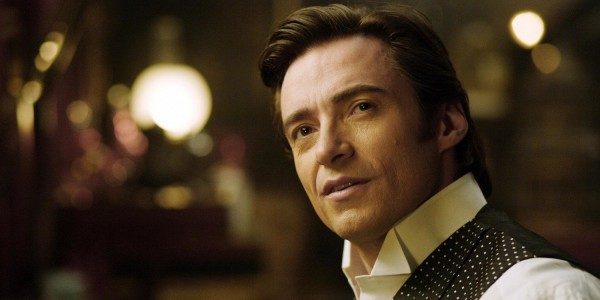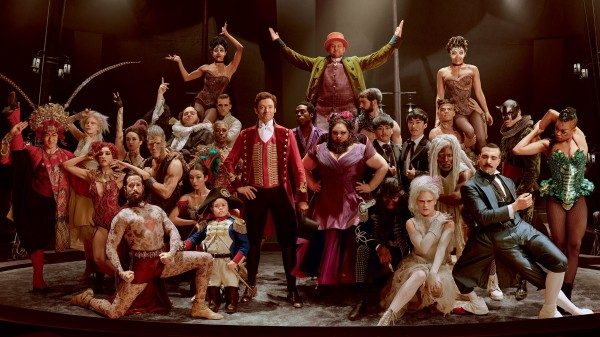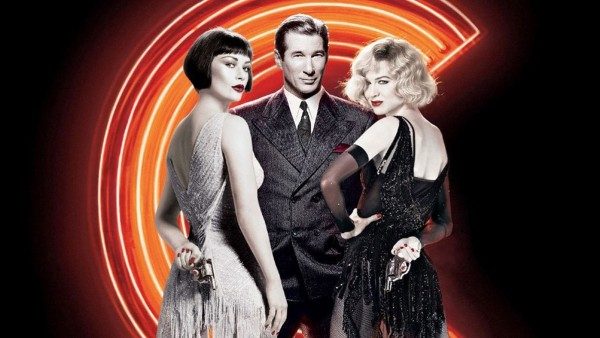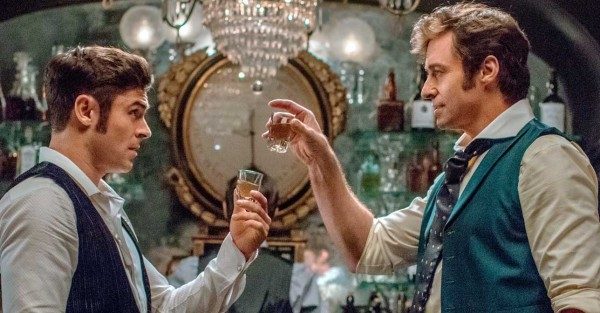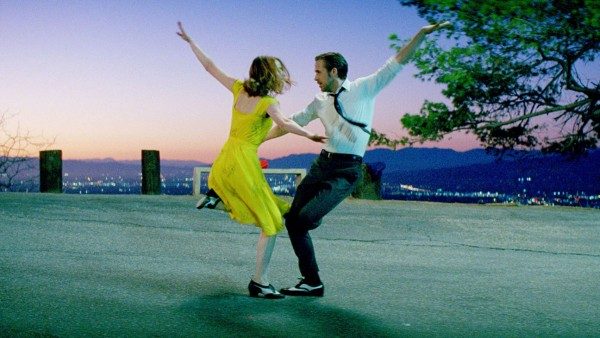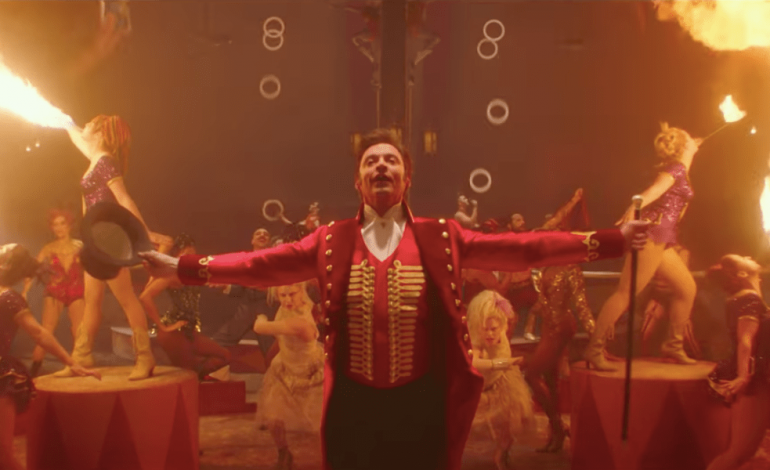

Despite the ever-changing, constantly unpredictable landscape of cinematic tastes, one fact that cannot be denied as of late is that the musical seems to be making a comeback. Five years ago, Academy Award-winning director Tom Hooper brought us a star-studded cinematic adaptation of the popular stage musical Les Misérables, based on the Victor Hugo novel of the same name. Apart from earning a substantial box office haul, winning three Oscars, and helping to introduce Eddie Redmayne to the world, the film also had a hand in bringing the movie musical back into the realm of awards-show contention and public conversation.
This was one of the first times since Chicago’s Best Picture win at the 2003 Academy Awards that a musical film earned both widespread critical praise and audience approval. It was soon followed by a string of Oscar- or Golden Globe-nominated nominated musicals, including Into the Woods, Annie, and The Jungle Book (which admittedly only featured a handful of songs from Disney’s original animated version).
Then came last year’s La La Land, which represented a true return-to-form for the movie musical, functioning as a nostalgic homage to such classics as Singin’ in the Rain and Moulin Rouge!. The movie was nominated for several Oscars and won an impressive six.
As the obsession with cinematic musicals continues, the latest effort has now found its way to theaters. The Greatest Showman may appear to be just another lavish, star-studded blockbuster musical meant to win over audiences and critics alike, but upon closer inspection, it seems that 20th Century Fox has taken its time to carefully calculate the ingredients required to produce a successful musical film.
The project has in fact been in the works for almost nine years, though for a long time the studio was hesitating to take a risk on releasing an original musical and has thus been attempting to secure every possible element that could contribute to the film’s success. Now, in the wake of La La Land’s success, Fox seems to have decided that the time is right for their musical baby to see the light of day after years of careful nurturing. Whether their careful planning pays off has yet to be seen.
The Greatest Showman began as nothing more than an idea in 2009. The concept was to develop an original musical film celebrating the life of P.T. Barnum, the real-life entertainer, author, publisher, and politician who founded the famous Barnum & Bailey Circus. While Barnum’s life has been presented in a handful of previous films, as well as the Tony Award-winning Broadway musical Barnum, this project aimed to be an entirely new interpretation of the entertainer’s story, featuring original music completely unrelated to the songs in Barnum.
Barnum himself is indeed an interesting figure to portray in film, considering his larger-than-life story. Born in Connecticut in 1810, Barnum started off as a newspaper man before relocating to New York City. There, he intended to pursue a career in entertainment, beginning by leading a variety troupe he named “Barnum’s Grand Scientific and Musical Theater.”
Next, Barnum purchased Scudder’s American Museum, renamed it after himself, and proceeded to turn the house of curiosities into one of the most popular attractions in the United States, filling it with everything from scientific instruments and a flea circus to the fake mummified remains of a mermaid creature and the first organized “freak show.” The museum, which also included a theater, wax figure collection, and menagerie of live animals, was known to bring in as many as 15,000 customers a day.
Around this time, Barnum gained notoriety for introducing the world to little person Charles Sherwood Stratton (known by his stage name “General Tom Thumb”) and for promoting the Swedish singer Jenny Lind, making great financial gains during her highly successful American tour.
In 1865, however, Barnum’s museum burned to the ground, resulting in the tragic death of several of the animals housed inside. Afterward, Barnum attempted to open a separate museum, but this one also burned down in 1868, prompting him to move on from entertainment for a time. The struggling Barnum set out on a lecture tour and then spent two terms in Connecticut’s legislature. Later, he would even serve as the mayor of Bridgeport, Connecticut.
But Barnum’s greatest fame came courtesy of a decision he made at 60 years old. In 1870, Barnum decided to return to the world of entertainment, establishing “P.T. Barnum’s Grand Traveling Museum, Menagerie, Caravan & Hippodrome.” This enterprise represented Barnum’s first foray into the circus business, but after he merged his act with that of James Bailey and James L. Hutchinson in 1881, he would become a legend in the industry. The result of the merger was a phenomenon named “Barnum & Bailey’s,” and with three rings, it became the biggest circus in the world. It would dominate the circus industry for years to come.
Barnum’s grandiose life obviously seems tantalizingly ripe for the movie treatment, which is probably why so many films have already been made documenting the entertainer’s exploits, starring such well-known actors as Wallace Beery, Burt Lancaster, and Beau Bridges. Even Barnum’s smaller accomplishments read like plot points in a movie. He once wrote a best-selling autobiography in a sensationalist style that was detested by many critics but praised by Mark Twain. In another instance, while touring Europe with General Tom Thumb, Barnum nearly purchased the birth home of William Shakespeare.
Still, Barnum is best remembered for his legendary circus. This phenomenal entertainment extravaganza, which later became the Ringling Bros. and Barnum & Bailey Circus after another merger, continued for decades until finally closing this past May after 146 years of operation. Perhaps it is no coincidence that The Greatest Showman will be released a mere seven months after Barnum’s most famous attraction saw its final curtain.
Back when the idea emerged to build a movie musical around Barnum’s life in 2009, Hugh Jackman was quickly chosen for the lead role. Fox already had a history of success with Jackman, who at that point had portrayed the character Wolverine in four of the studio’s wildly popular X-Men films.
They also knew that Jackman was a talented singer and dancer, since he had risen to prominence playing Curly in a 1998 production of the musical Oklahoma! in London’s West End, and had performed several musical numbers while hosting the Academy Awards in 2009.
But the studio harbored serious concerns over the idea of releasing an original movie musical, a type of film that audiences no longer seemed to embrace. Over the next several years, Fox carefully worked to gather Hollywood’s top musical talent in order to ensure the success of their experiment.
Bill Condon was brought on to help write the film after penning the wildly successful musicals Chicago and Dreamgirls. While both of these films had succeeded as early-2000s film adaptations of existing stage musicals, Fox hoped that bringing Condon aboard The Greatest Showman would lend its original musical idea added credibility.
Meanwhile, Jackman continued to gain recognition for his musical talents, starring in Hooper’s Les Misérables in 2012. Hoping to capitalize on the success of this film, Fox had Condon and fellow screenwriter Jenny Bicks write the Jenny Lind character in The Greatest Showman with Jackman’s Les Misérables costar Anne Hathaway in mind. However, the role would eventually go to Swedish actress Rebecca Ferguson.
In 2013, Fox hired up-and-coming songwriters Justin Paul and Benj Pasek, who had gained recognition for working on musicals such as A Christmas Story and the hit NBC show Smash, to write the music for The Greatest Showman. The decision would later prove especially fortuitous, as 2016 saw Pasek and Paul launch to unprecedented new heights. The duo won the Tony Award for Best Original Score after writing the music and lyrics for the Broadway hit Dear Evan Hansen, and picked up an Oscar for Best Original Song after penning the lyrics to “City of Stars,” featured in La La Land.
Suddenly, Fox was working with a creative team of established musical powerhouses. All that remained was to further bolster the film’s cast with talented performers who would compliment Jackman. In 2016, Fox courted Zac Efron, an actor who got his start playing the lead in Disney’s High School Musical franchise.
While Efron’s singing voice had been blended with that of Drew Seeley for the original High School Musical (since the music was written before Efron was cast and was fairly high for his baritone range), the movie’s sequels featured songs better suited to a lower register, allowing Efron to perform all of the music himself.
Later, Efron had played Link Larkin in the film adaptation of the popular Broadway musical Hairspray, which earned both critical and commercial success, before moving on to a series of more mature comedic roles. With his musical talents well established, it is easy to see why Efron was chosen for the role of Phillip Carlyle, who shares many scenes with Jackman’s Barnum.
Meanwhile, another former Disney star, Zendaya, was cast as Anne Wheeler, an acrobat and trapeze artist who develops a relationship with Efron’s Carlyle. In addition to recently gaining wide recognition for playing Michelle in Marvel Studios’ Spider-Man: Homecoming, Zendaya is known for her budding career as a singer.
Rounding out The Greatest Showman’s main cast was Michelle Williams, who signed on in July of 2016. Two years earlier, Williams had turned heads with her performance as lead character Sally Bowles in a revival of the stage musical Cabaret, making her a natural choice for the role of Barnum’s wife Charity in The Greatest Showman.
With a cast and crew composed of some of the most prominent and relevant musical talents Hollywood had to offer, Fox began extensive rehearsals for The Greatest Showman in October of 2016, intending to prepare their team for the difficult choreography and vocal performances that the ambitious movie would require. The film began shooting near the end of November, right before La La Land was released in theaters to astounding critical praise and commercial success.
Fox seemed to have timed everything just right, beginning production on their film just as La La Land proved moviegoers’ desire for innovative original musicals. This was, in fact, no coincidence. The studio had actually postponed The Greatest Showman’s release date by a full year so as to avoid competing with La La Land, a decision which also allowed the studio to judge demand for their film based on La La Land’s reception. With the immense success of the Ryan Gosling and Emma Stone-starring musical, Fox likely had all the proof they needed to fully commit to The Greatest Showman and prepare it for a December 2017 release date.
Now that the film has finally been released, it will be interesting to see if Fox’s carefully calculated endeavor pays off. Was all of the waiting and planning worth it, or have audiences already tired of over-the-top musical numbers and strategically-chosen cast members? Only time will tell, and time is something that Fox will likely have no problem spending. After all, if there is one thing the studio has learned through this whole process, it is the value of patience.


